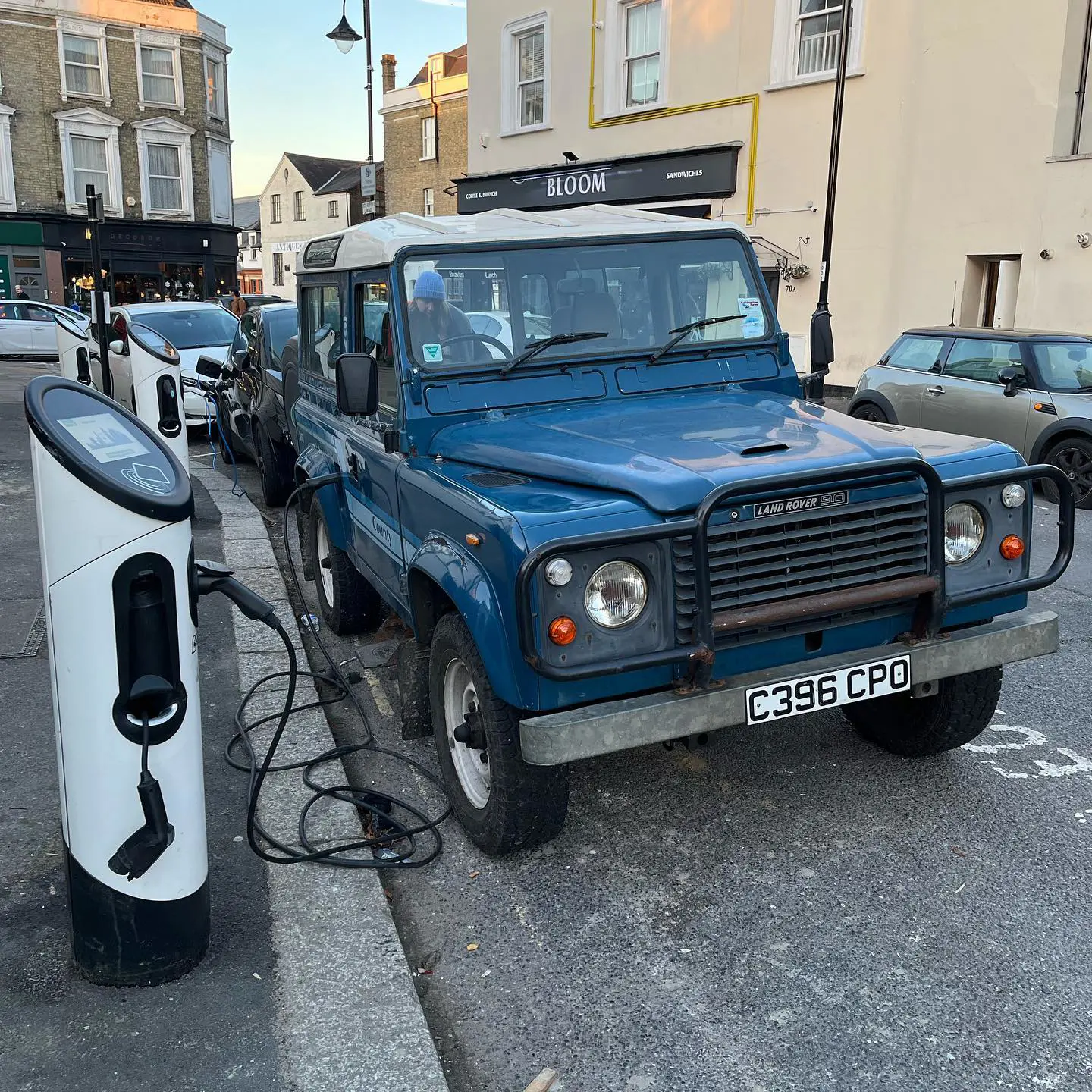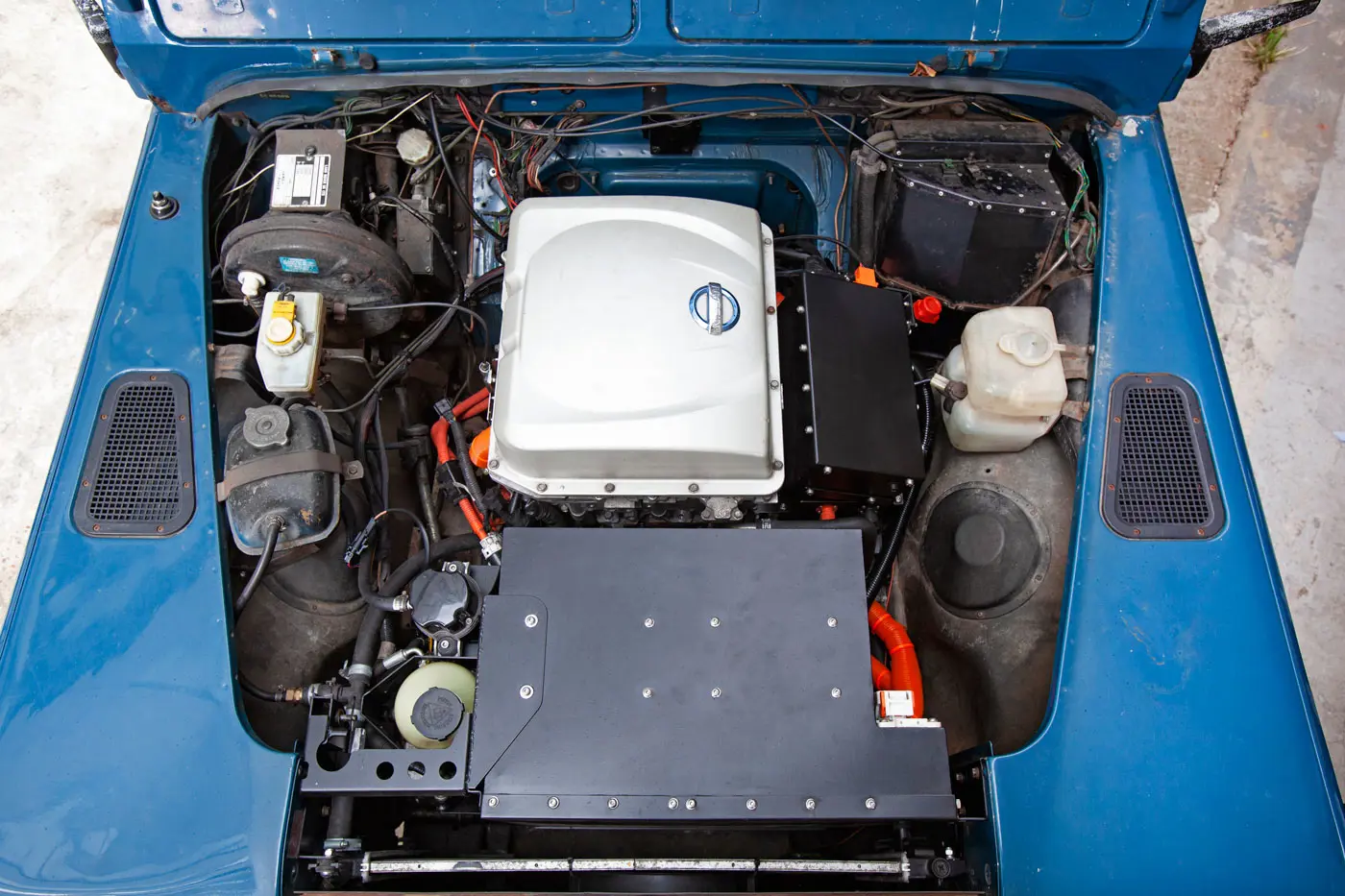Staying positive: when EVs go off the beaten track
08 March 2023
In our last feature on battery converted classics, Lancaster Insurance Services met Matthew Quitter of London Electric Cars and his modified 1953 Morris Minor, now running as an electric vehicle in and around the capital.
As that feature stated, it was the first of many internal combustion engined historics transformed by the firm to run an electric motor and a battery pack. By now, you might have guessed that Matthew’s Morris Minor wasn’t the only emissions-free classic on his fleet; he also has a 1986 Land Rover Ninety that paved the way for a series (if you excuse the pun) of London Electric Cars’ Land Rover conversion kits (alongside Mini and air-cooled Volkswagen equivalents)
Last year, the Ninety visited the All Party Parliamentary Historic Vehicles Group to take MPs for a drive; it was also sampled by Land Rover Monthly Magazine’s Jérôme André, also editor of the EV Builders’ Guide who took the Ninety into the Ultra-Low Emissions Zone free of charge. Although its age did not qualify it from exemption, its status as an electric vehicle meant its driver did not need to pay the £12.50 daily entry fee.
What, then, was the Ninety like to drive and live with? Crucially, it retained its full off-road functionality, with its supercharged engine (previously uprated) now at home in a Land Rover. Vehicles like London Electric Cars’ Ninety can actually go that bit further than even a snorkel equipped petrol or diesel Landie, as Matthew explained. ‘It would work fully submerged if you could keep it on the bottom; the battery packs are well protected.’

Jérôme agreed. ‘Overall, for a farmer, beekeeper, or gardener, the London Electric Cars’ [Land Rover] system will cover everything they need […] most EVs handle deep water wading better than ICE vehicles (everything is sealed, and there is no need for an air intake).’
Aerodynamics and transmission losses blunt the range of the converted Ninety somewhat, powered by a Nissan Leaf motor and a 3.3 or 6.6kW battery, driving the original clutch, gearbox and transfer cases. It must be said, however, the economy of certain Land Rovers, including the legendary Stage 1 V8, were hardly impressive to begin with.
The kit can be applied to any Series 1, 2, 2a, 3, 90, 110 or Defender; altered Landies can even tow the same weight as an internal combustion engine equivalent, though the range would suffer.
‘If you had to tow five tons for 50 miles, it would pull it, but yes, that would hit the range’ Jerome said, ‘but it can do everything else a Ninety can do. It drives the same and it drives [in effect] like a V8 automatic [a model offered only at the time of the Ninety to the late HRH Queen Elizabeth II]’.
Never ones for on-road refinement, there were more things that impressed with the electric Ninety. ‘It’s quieter for starters, and the range is limited to 100 miles, though you’re probably not doing much more than 100 miles on a full tank in a V8 because the tank itself is quite small.
Performance? Hard to draw parallels, as electric motor deliver maximum torque from 0 RPM, but, expensive Defender Works 70th Edition V8 (and certain Bowler models) aside, V8 Series and Defenders ‘weren’t that quick, but made a lovely noise’, in Jérôme’s words.
For the visceral appeal, and the love of a V8 soundtrack, then, the electric Ninety must come second. ‘You get more torque, but less horsepower. All things considered, it ‘offers 80 per cent of a V8 Defender offers you, with zero emissions.’

Cost remains the key limiting factor in classic car EV conversions. One has to spend a lot to enjoy cheaper running costs; electricity remains cheaper than liquid fuel, but rising energy caps – confirmed to increase again by April – could, if unchecked, cancel out this advantage long term.
London Classic Cars’ full packages begin from £35,000 at 2023 prices, with the limit on Land Rover conversions rising to as much as £100,000, determined, as discussed in the last feature, by battery pack and motor options; their age and origin also has a bearing on what you’ll pay. The best balance between cost, performance and range is currently the Nissan Leaf’s powertrain.
As we will see in the next feature, driving costs down is, in Jérôme’s opinion, the key to converting more classic cars before legislation mitigates against them. Pre-built power packs designed for any historic vehicle are coming – and, what’s more, they’re getting cheaper, thanks to more companies investing in the infrastructure and technology needed to manufacture kits than ever before.
‘You have two types of convertors,’ Jérôme explained. ‘The first are like Matthew, doing it as cost effectively as possible with recovered components. The second are [independent] companies […] that can invest in scaling to produce dozens if not hundreds of complete solutions [battery pack and motor kits]. ‘The prices are coming down, too – by next year [conversion kits] will be around $60,000 […] in 2019 or 2020, that would have cost $120-$150,000.’
